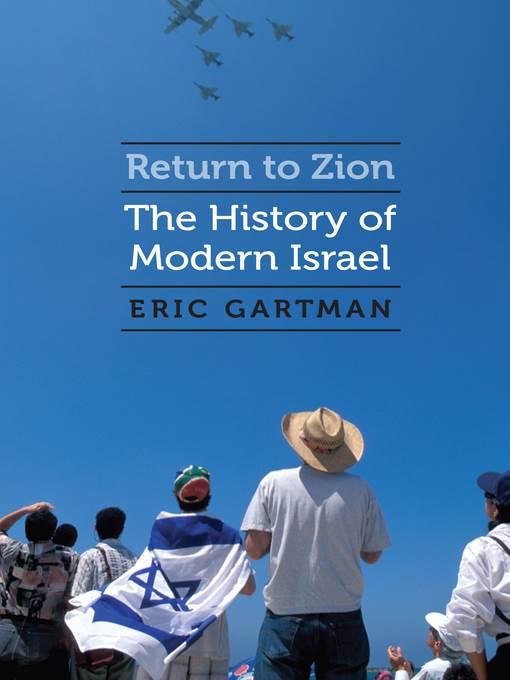
Return to Zion
The History of Modern Israel
- اطلاعات
- نقد و بررسی
- دیدگاه کاربران
نقد و بررسی

October 15, 2015
It can often be difficult to understand how precarious Jewish life was in a world without a Jewish state. Focusing on the strong personalities involved in Israel's history, Gartman, a U.S. Department of Defense intelligence analyst, draws on many eyewitness accounts. He explains the drive for a Jewish homeland as a response to anti-Semitism in Europe in the late 1800s, followed by pogroms in Russia and Nazism in Europe in the early 1900s. The book's quotations from Israeli leaders and citizens lend a fly-on-the-wall perspective to seminal events in Israeli history. Recently declassified U.S. documents contribute a dimension of military and political intrigue. Modern Israel's evolution from an impoverished and underarmed group of stateless war refugees to a technologically and culturally advanced nation unfolds; threats against Israel's existence change from being overwhelmed by large enemy armies on her borders to Iran's nuclear capabilities and the problematic relations between Israel and the Palestinians. Colin Shindler's A History of Modern Israel covers much the same time period but with more political detail. VERDICT Readers interested in a concise history of Israel, especially those who believe in her right to exist, will appreciate this book.--Laurie Unger Skinner, Coll. of Lake Cty., Waukegan, IL
Copyright 2015 Library Journal, LLC Used with permission.

September 1, 2015
A history of the Jewish founding of Israel told through eyewitness accounts of both Arabs and Jews. By beginning with the ancient story of the defense of Masada against the Roman onslaught in 66 C.E., U.S. Department of Defense intelligence analyst Gartman signals an emphasis on Israel's ongoing vulnerability to attack by hostile outside forces. The idealism of the first migrants to Zion-those on the margins of Russian society, the Pale of Settlement, who were fleeing the pogroms of the 1880s-was tempered by the reality of the situation in Palestine: poor land for farming, Bedouin raids, malaria, dysentery, typhus, and back-breaking labor by shtetl Jews who had never done such manual labor. Theodor Herzl's Zionist movement (aided by more pogroms) prompted waves of Jewish immigration that upset the entrenched Arab population, who believed the land belonged to them. Gartman traces how the delicate balance of power began to shift toward the Jews, especially with the British Balfour Declaration of 1917. The author employs extended extracts from documents by contemporary observers-e.g., an account by Khalil al-Sakakini, "one of the Arabs' leading intellectuals," of the riots that broke out between the Arabs and Jews in Jerusalem on April 4, 1920, and an early chronicle by Jewish leader David Ben-Gurion, who insisted that the Jews "were neither desirous nor capable of building our future in Palestine at the expense of the Arabs." The ramifications of the Holocaust and Arab intransigence deepened the chasm between the two Palestinian neighbors, which, despite war upon war (delineated chapter by chapter), has not yet been settled. While Gartman does not bring new material to this work, he offers a tidy, compelling presentation and comprehensive documentation for a solid study. A thorough, proficient overview that quietly hums a pro-Jewish tune.
COPYRIGHT(2015) Kirkus Reviews, ALL RIGHTS RESERVED.




دیدگاه کاربران